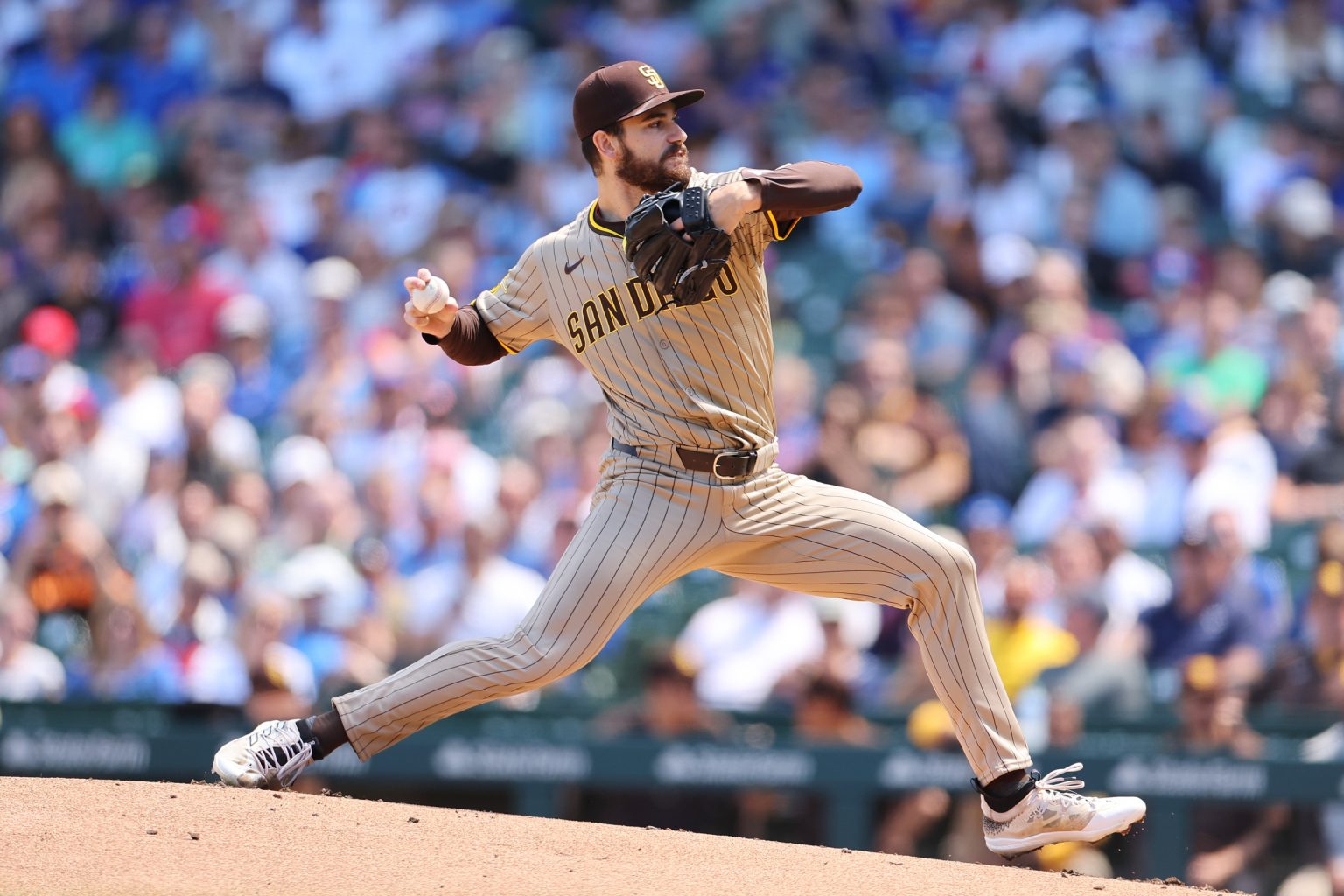The Chicago Cubs have made a bold move by acquiring outfielder Kyle Tucker from the Houston Astros, signaling their intent to compete for the National League Central title in 2025. This strategic acquisition has positioned the Cubs as a potential contender, but their ambitions may extend beyond just the Tucker trade. There’s speculation that the Cubs might be aiming even higher, with their sights set on bolstering their pitching rotation with a potential blockbuster trade for San Diego Padres ace, Dylan Cease. This move, if realized, could significantly elevate their chances and solidify their position as frontrunners in the NL Central.
Dylan Cease, currently with the Padres, is approaching the final year of his team control. Projected to command a substantial $108 million contract in free agency next winter, Cease represents a high-value target for the Cubs. While his tenure with the White Sox, his previous team, had its ups and downs, his individual brilliance and undeniable talent are undeniable. Cease’s addition to the Cubs’ rotation would address a critical weakness in their roster, providing much-needed pitching depth and a formidable presence alongside Justin Steele and Shota Imanaga. This potential acquisition is not merely about plugging a gap; it’s about adding a true ace who could transform the Cubs’ pitching staff into a dominant force.
The prospect of Cease joining the Cubs has sparked significant excitement, with predictions suggesting that such a move would instantly propel them to the top of the NL Central preseason projections. Acquiring a pitcher of Cease’s caliber would not only bolster the Cubs’ starting rotation but also significantly impact their overall team performance and playoff potential. The potential impact of such a trade is not limited to on-field performance; it could also dramatically alter the perceived balance of power within the NL Central and influence the overall narrative surrounding the league.
However, the acquisition of Cease wouldn’t be without its challenges. A crucial factor for the Cubs would be securing Cease’s long-term commitment, either through a contract extension before the trade or by re-signing him in free agency the following winter. The Cubs front office, under Jed Hoyer, needs to carefully consider the financial implications of acquiring two high-priced players in a single offseason, especially with the risk of losing them both to free agency the following year. A significant investment in both Tucker and Cease might limit the team’s financial flexibility moving forward. Balancing the immediate gains with long-term financial stability is a critical concern for the Cubs.
The Cubs’ pursuit of Cease hinges on their willingness to assume the risk associated with a potential short-term investment. Trading for a player in his final year of team control always carries the risk of losing him without a substantial return. The Cubs will need to carefully evaluate whether Cease’s potential contribution for a single season outweighs the potential loss of significant assets if he departs in free agency. This calculated gamble could pay off handsomely if the Cubs manage to secure a deep playoff run, or even a World Series title, during Cease’s potential one-year stint.
The Cubs’ potential pursuit of Dylan Cease underscores their ambition to build a winning team in the near future. While the addition of Kyle Tucker has already bolstered their lineup, acquiring a top-tier pitcher like Cease would be a game-changer, transforming the Cubs into legitimate contenders. However, the front office must weigh the financial risks associated with such a move, considering the potential for losing both Tucker and Cease to free agency after the 2025 season. The decision to pursue Cease represents a high-stakes gamble for the Cubs, one that could either propel them to championship contention or leave them with a hefty financial burden and a depleted roster. The baseball world will be watching closely as the Cubs navigate this pivotal offseason.

